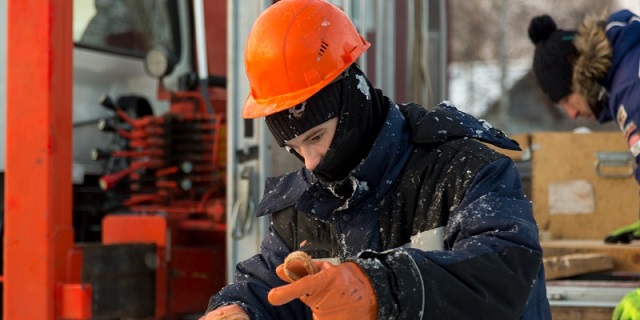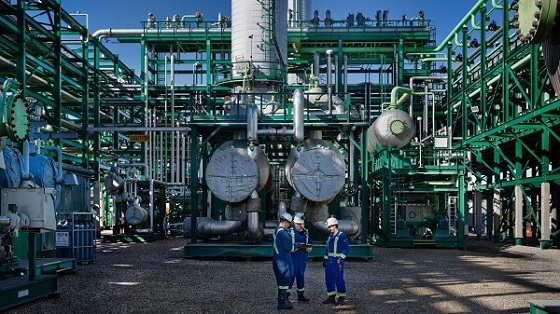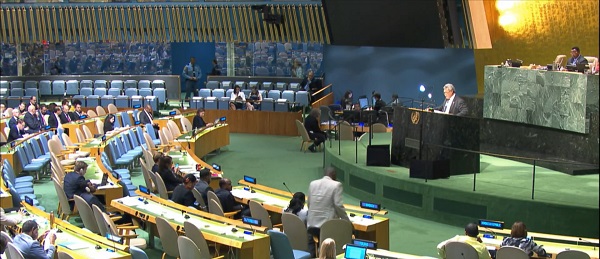Alberta
Here’s why the rest of Canada doesn’t want Alberta to leave the CPP

From the Fraser Institute
By Tegan Hill Associate Director, Alberta Policy, Fraser Institute
Provincial and territorial finance ministers recently met with federal Finance Minister Chrystia Freeland to discuss a hot topic—Alberta’s potential withdrawal from the Canada Pension Plan (CPP). According to Nova Scotia Finance Minister Allan MacMaster, “there was real consensus” from his peers that they want Alberta to stay in the CPP. This is unsurprising; while an Alberta pension plan would benefit Albertans, it would come at great cost to the rest of Canada.
Why might Albertans want to leave the CPP?
Albertans pay a basic CPP contribution rate of 9.9 per cent, typically deducted from their paycheques. According to a report commissioned by the Smith government, that rate would fall to 5.91 per cent for a new CPP-like provincial program for Albertans, which means each Albertan would save up to $2,850 in 2027 (the first year of the hypothetical Alberta plan) while maintaining the same retirement benefits. In sharp contrast, to keep the CPP afloat without Alberta, the basic contribution rate for the rest of Canada would increase to 10.36 per cent. In other words, smaller paycheques for the rest of Canada.
The report’s calculation is based on several assumptions, which some analysts have criticized, arguing that Alberta’s estimated share of CPP assets—$334 billion—is not fair or realistic. To be clear, this share (equal to 53 per cent of the CPP) is based on specific legislation that governs the withdrawal of any province from the CPP. But, even if the share of assets to Alberta were much lower, the province would benefit from reduced contribution rates with an Alberta pension plan.
For instance, if Alberta left the CPP and received merely 25 per cent of the CPP’s assets in 2025 ($150 billion), the contribution rate in Alberta would fall from 9.9 per cent to 7.8 per cent, which would mean $1,086 in savings annually per Albertan. Meanwhile, the contribution rate for the rest of Canada would have to increase. If you dropped Alberta’s share to 20 per cent ($120 billion in 2025), Alberta’s contribution rate would fall to 8.2 per cent, equivalent to approximately $836 in savings annually per Albertan.
Put differently, even if Alberta’s share of assets were less than half the report’s estimate, Albertans would benefit from lower contribution rates for the exact same benefits while the rest of Canada may pay higher contributions to maintain current benefits. Why does Alberta mean so much to the CPP? Because Alberta generally has higher employment rates and a comparatively younger population, which means more workers pay into the fund and less retirees take from it. Albertans also have higher average incomes, which means there’s a higher level of premiums paid into the fund. As such, Albertans have paid significantly more into the CPP than its retirees have received in return.
It’s not surprising that the rest of Canada doesn’t want Alberta to leave the CPP for an equivalent provincial plan because—even if Alberta’s share is less than $334 billion, Alberta’s withdrawal would come with big costs for other Canadians across the country.
Author:
Alberta
Cross-Canada NGL corridor will stretch from B.C. to Ontario

Keyera Corp.’s natural gas liquids facilities in Fort Saskatchewan. Photo courtesy Keyera Corp.
From the Canadian Energy Centre
By Will Gibson
Keyera ‘Canadianizes’ natural gas liquids with $5.15 billion acquisition
Sarnia, Ont., which sits on the southern tip of Lake Huron and peers across the St. Clair River to Michigan, is a crucial energy hub for much of the eastern half of Canada and parts of the United States.
With more than 60 industrial facilities including refineries and chemical plants that produce everything from petroleum, resins, synthetic rubber, plastics, lubricants, paint, cosmetics and food additives in the southwestern Ontario city, Mayor Mike Bradley admits the ongoing dialogue about tariffs with Canada’s southern neighbour hits close to home.
So Bradley welcomed the announcement that Calgary-based Keyera Corp. will acquire the majority of Plains American Pipelines LLP’s Canadian natural gas liquids (NGL) business, creating a cross-Canada NGL corridor that includes a storage hub in Sarnia.
“As a border city, we’ve been on the frontline of the tariff wars, so we support anything that helps enhance Canadian sovereignty and jobs,” says the long-time mayor, who was first elected in 1988.
The assets in Sarnia are a key piece of the $5.15 billion transaction, which will connect natural gas liquids from the growing Montney and Duvernay plays in B.C. and Alberta to markets in central Canada and the eastern U.S. seaboard.
NGLs are hydrocarbons found within natural gas streams including ethane, propane and pentanes. They are important energy sources and used to produce a wide range of everyday items, from plastics and clothing to fuels.
Keyera CEO Dean Setoguchi cast the proposed acquisition as an act of repatriation.
“This transaction brings key NGL infrastructure under Canadian ownership, enhancing domestic energy capabilities and reinforcing Canada’s economic resilience by keeping value and decision-making closer to home,” Setoguchi told analysts in a June 17 call.
“Plains’ portfolio forms a fully integrated cross Canada NGL system connecting Western Canada supply to key demand centres across the Prairie provinces, Ontario and eastern U.S.,” he said.
“The system includes strategic hubs like Empress, Fort Saskatchewan and Sarnia – which provide a reliable source of Canadian NGL supply to extensive fractionation, storage, pipeline and logistics infrastructure.”
Martin King, RBN Energy’s managing director of North America Energy Market Analysis, sees Keyera’s ability to “Canadianize” its NGL infrastructure as improving the company’s growth prospects.
“It allows them to tap into the Duvernay and Montney, which are the fastest growing NGL plays in North America and gives them some key assets throughout the country,” said the Calgary-based analyst.
“The crown assets are probably the straddle plants in Empress, which help strip out the butane, ethane and other liquids for condensate. It also positions them well to serve the eastern half of the country.”
And that’s something welcomed in Sarnia.
“Having a Canadian source for natural gas would be our preference so we see Keyera’s acquisition as strengthening our region as an energy hub,” Bradley said.
“We are optimistic this will be good for our region in the long run.”
The acquisition is expected to close in the first quarter of 2026, pending regulatory approvals.
Meanwhile, the governments of Ontario and Alberta are joining forces to strengthen the economies of both regions, and the country, by advancing major infrastructure projects including pipelines, ports and rail.
A joint feasibility study is expected this year on how to move major private sector-led investments forward.
Alberta
Alberta school boards required to meet new standards for school library materials with regard to sexual content

Alberta’s government has introduced new standards to ensure school library materials are age-appropriate.
School libraries should be safe and supportive places where students can learn and explore without being exposed to inappropriate sexual content. However, in the absence of a consistent standard for selecting age-appropriate library materials, school boards have taken different approaches, leading to concerns about safeguards in place.
In response to these concerns, and informed by feedback from education partners and the public, Alberta’s government has created standards to provide school boards with clear direction on the selection, availability and access to school library materials, such as books.
“Our actions to ensure that materials in school libraries don’t expose children to sexual content were never about banning books. These new standards are to ensure that school boards have clear guidance to ensure age-appropriate access to school library materials, while reflecting the values and priorities of Albertans.”
The new standards set clear expectations for school library materials with regard to sexual content and require school boards to implement policies to support these standards.
Standards for school library materials
Under the new standards, school libraries are not permitted to include library materials containing explicit sexual content. Non-explicit sexual content may be accessible to students in Grade 10 and above, provided it is age-appropriate.
“Protecting kids from explicit content is common sense. LGBTQ youth, like all children, deserve to see themselves in stories that are age-appropriate, supportive and affirming – not in material that sexualizes or confuses them.”
School boards must also regularly review their school library collections, publish a full list of available materials and ensure that a staff member supervises students’ access to school library materials. School boards will have to remove any materials with explicit sexual content from their school libraries by October 1.
School board policies and procedures
All school boards must have publicly available policies that align with the new standards for selecting and managing library materials by January 1, 2026. School boards can either create new policies or update existing ones to meet these requirements.
These policies must outline how school library materials are selected and reviewed, how staff supervise students’ access throughout the school day, and how a student, parent, school board employee or other member of the school community can request a review or removal of materials in the school library. School boards are also required to clearly communicate these policies to employees, students and parents before January 2026.
“A robust, grade- and age-appropriate library catalogue is vital for student success. We welcome the ministry’s initiative to establish consistent standards and appreciate the ongoing consultation to help craft a plan that will serve our families and communities well.”
“Red Deer Public Schools welcomes the new provincial standards for school library materials. Our division is committed to maintaining welcoming, respectful learning spaces where students can grow and thrive. Under the new standards for school libraries, we remain dedicated to providing learning resources that reflect our values and support student success.”
Quick facts
- The new standards will apply to public, separate, francophone, charter and independent schools.
- The ministerial order does not apply to municipal libraries located within schools or materials selected for use by teachers as learning and teaching resources.
- From May 26 to June 6, almost 80,000 people completed an online survey to provide feedback on the creation of consistent standards to ensure the age-appropriateness of materials available to students in school libraries.
Related information
- Ministerial Order
- School library standards engagement
- Reference Materials: Content warning: this document contains graphic content that may be disturbing to viewers and is not appropriate for young viewers. Viewer discretion is advised.
-

 COVID-1916 hours ago
COVID-1916 hours agoFDA requires new warning on mRNA COVID shots due to heart damage in young men
-

 Business14 hours ago
Business14 hours agoCarney’s new agenda faces old Canadian problems
-

 Indigenous15 hours ago
Indigenous15 hours agoInternal emails show Canadian gov’t doubted ‘mass graves’ narrative but went along with it
-

 Daily Caller11 hours ago
Daily Caller11 hours agoBlackouts Coming If America Continues With Biden-Era Green Frenzy, Trump Admin Warns
-

 Bruce Dowbiggin17 hours ago
Bruce Dowbiggin17 hours agoEau Canada! Join Us In An Inclusive New National Anthem
-

 Business2 days ago
Business2 days agoUN’s ‘Plastics Treaty’ Sports A Junk Science Wrapper
-

 Environment2 days ago
Environment2 days agoEPA releases report on chemtrails, climate manipulation
-

 Business2 days ago
Business2 days agoCBC six-figure salaries soar




